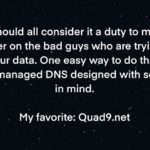 I love a good history book. And love reading insider info on the mysteries of the U.S. Intelligence Community. Which means I have been looking forward to Vince Houghton’s “Nuking The Moon” for quite a while.
I love a good history book. And love reading insider info on the mysteries of the U.S. Intelligence Community. Which means I have been looking forward to Vince Houghton’s “Nuking The Moon” for quite a while.
Vince is a special kind of historian, a person who not only looks for facts and meaning, but is skilled in expressing history in understandable ways. This is why his podcast, SPYCAST, is one of the most enjoyable examinations of history and current intelligence community issues available on the net. I could not imagine a better person to serve in his current capacity as historian and curator of the International Spy Museum in DC.
Now back to the book. What a page-turner. The book explores abandoned plans from the U.S. Intelligence Community, some of which are bizarre, and a few, like the concept of dropping a nuke on the moon, are terrifying! The book reminds me of the concept we used to call S&T. I don’t mean S&T in its traditional use of Science and Technology. I mean S&T to stand for Sick and Twisted. Ha! I have seen many successful activities in the IC, and the greatest came from amazing thinkers who had that knack for thinking so far out of the box to be on the edge of crazy. Those Sick and Twisted thinkers generate lots of ideas, many of which never turn into full scale proposals. Some of which turn into plans that never get approved (the subject of Vince’s book), but a narrow slice of these S&T projects become real operations. The successful ones, we hope, will never be written about.
Reading the book will expose you to a way of thinking that comes from a necessity to win in a great struggle. Imagine you were in that fight. Wouldn’t you want the best S&T on your side?
The book has many stories that will make you feel. You will feel empathy for animals harmed in the furtherance of security objectives, you may feel like proposals were being created that would waste your tax dollars, and may in some cases read about ideas that in your mind would actually put us at risk of causing much grater harm to national security than the planners were thinking they would. There is plenty of emotion in this book.
But there is humor too. I found myself laughing plenty of times, maybe because in hindsight we can think of much better ways to accomplish objectives than those proposed here.
Overall I loved the book, and most strongly recommend it to the workforce of today’s Intelligence Community as well as those who enjoy tales of espionage. The book is really well done.
For more see: “Nuking The Moon and other intelligence schemes and military plots left on the drawing board”
Additional Reading:
If You Drive A Car, Or Know Someone Who Does, You Must Read This…
Pulitzer Prize-Winning Fred Kaplan Explores The Secret History of Cyber War
What You Need To Know About The Administration’s Cybersecurity National Action Plan
Like Kip in Napoleon Dynamite, We love Technology
The Security Yearbook by Richard Stiennon
The Perfect Weapon: War, Sabotage, and Fear in the Cyber Age
 This is the CTOvision guide on the megatrend of Artificial Intelligence. This report gives a high level overview of the most important factors of the trend, gives updated insights into the activities of the major AI companies, and succinct descriptions of AI tech. It also points to key CTOvision reporting to help readers dive deeper into the topic.
This is the CTOvision guide on the megatrend of Artificial Intelligence. This report gives a high level overview of the most important factors of the trend, gives updated insights into the activities of the major AI companies, and succinct descriptions of AI tech. It also points to key CTOvision reporting to help readers dive deeper into the topic.



